Mark’s Notebook - Page 15
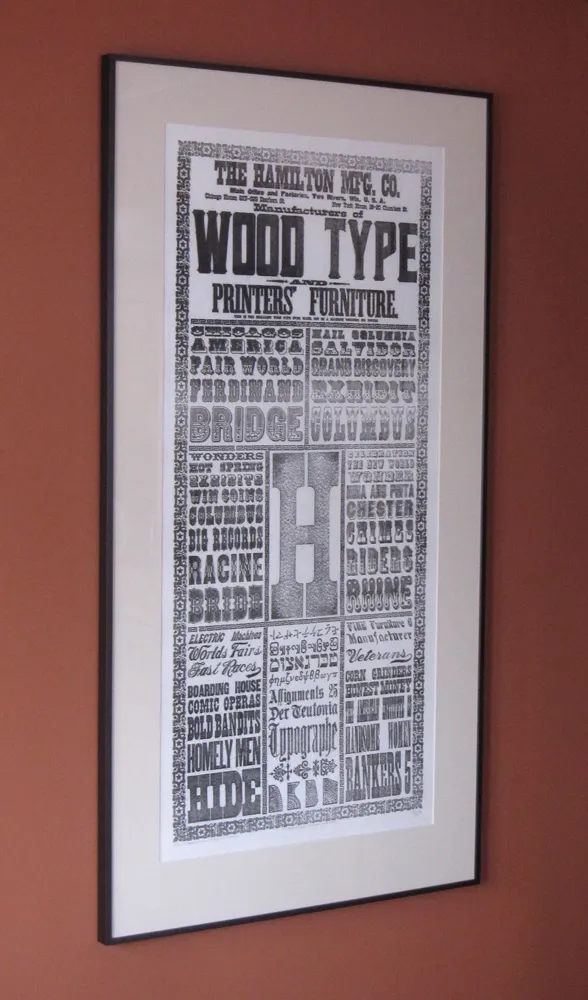
I finally got around to framing the beautiful commemorative print I got from the Hamilton Wood Type & Printing Museum back in 2009. To give you an idea of the size, the frame is five feet tall. By far the biggest thing I’ve ever had framed. Here are a couple close-up shots:
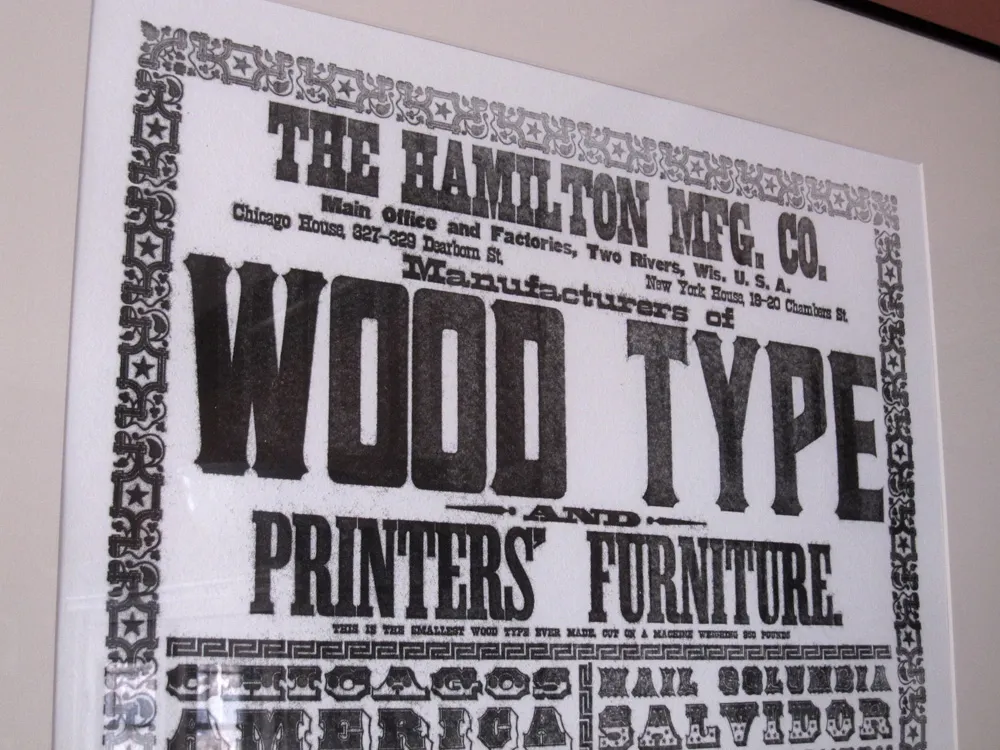
I love the part below the big heading where it says, “THIS IS THE SMALLEST WOOD TYPE EVER MADE, OUT OF A MACHINE WEIGHING 950 POUNDS”.

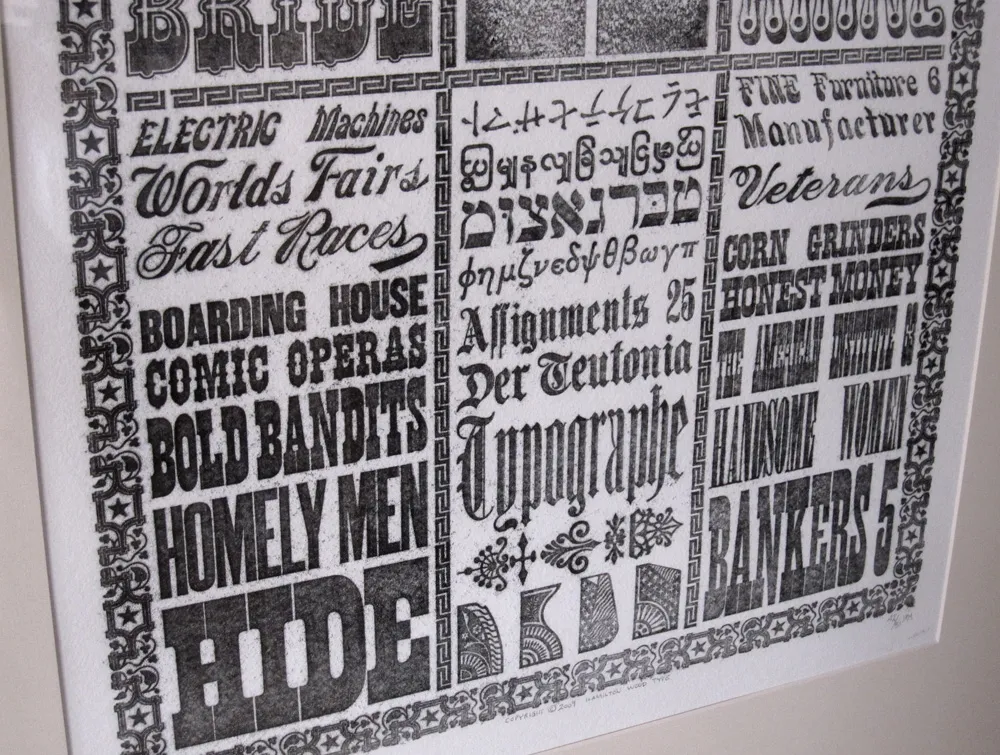
The print was taken from a literal showcase of Hamilton Wood Type made for the 1893 Columbia Exposition in Chicago. It’s composed of virgin (never used for printing) wood type, some of it painted. If you have seen wood type before, it’s usually dark brown in color, stained from use. This is what the stuff looked like when it was brand new.
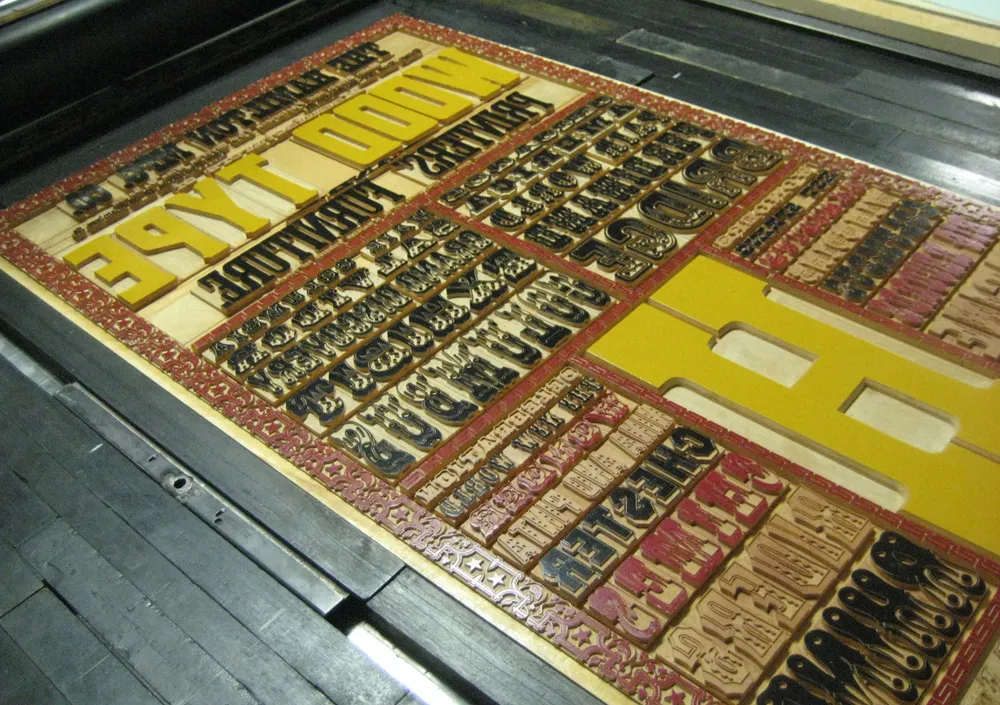
The curators of the Hamilton were able to pull prints from the showcase without getting a bit of ink on it. The display was taken out of its protective case and wrapped in 3M window insulator film. The film was inked and the prints were pulled from that. It’s not as crisp as a print taken directly from wood type, but it’s the first time any kind of print was made from this old type in over 100 years.

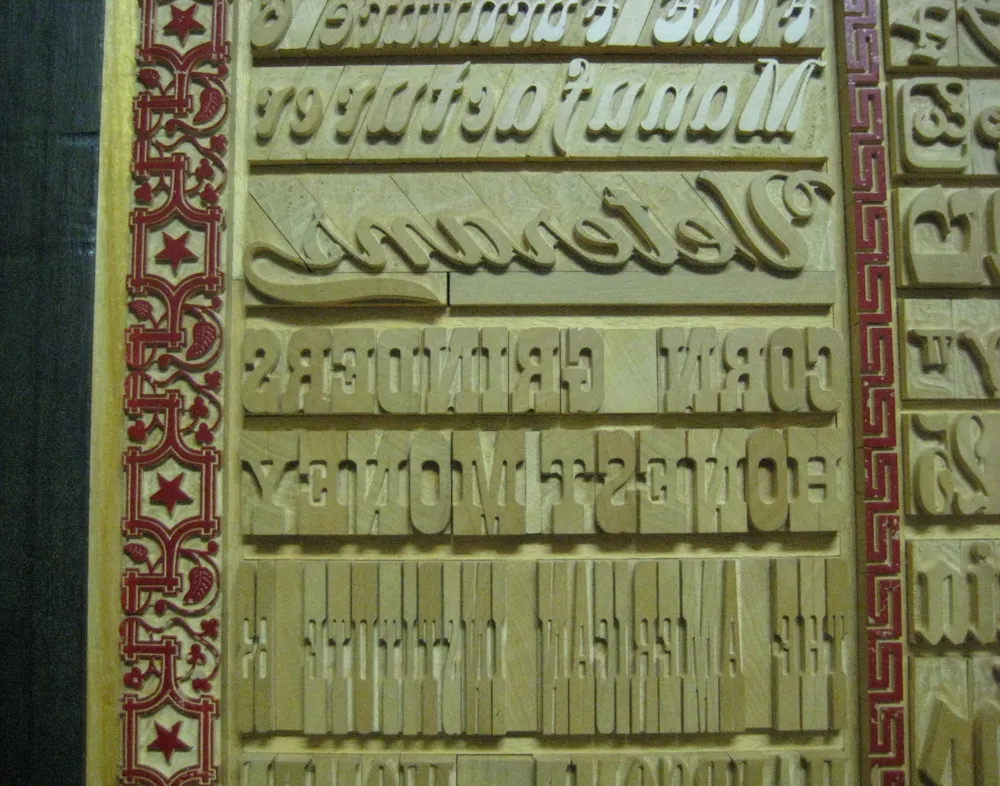
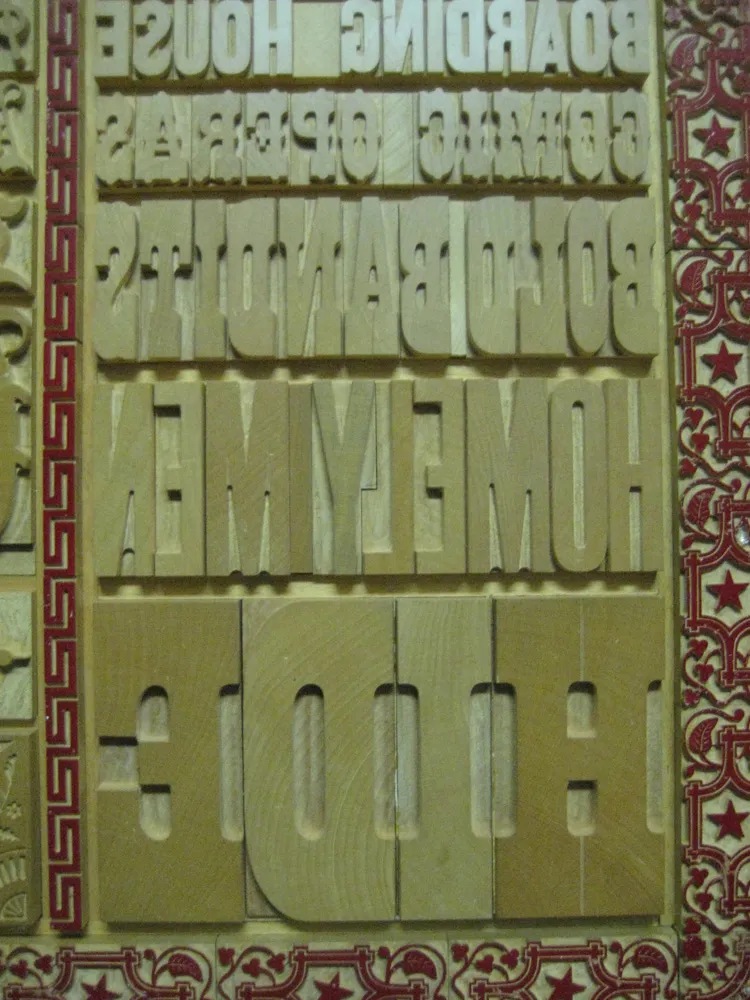
More photos here. If you’re at all interested in type, wood type, or letterpress printing, I highly recommend paying a visit to the Hamilton Wood Type & Printing Museum. It’s in Two Rivers, Wisconsin, about a couple hours by car north of Milwaukee.

Seen at the Eastman House, Rochester, New York, July 19, 2008. I think this was on the side of an old movie projector that was on display there.
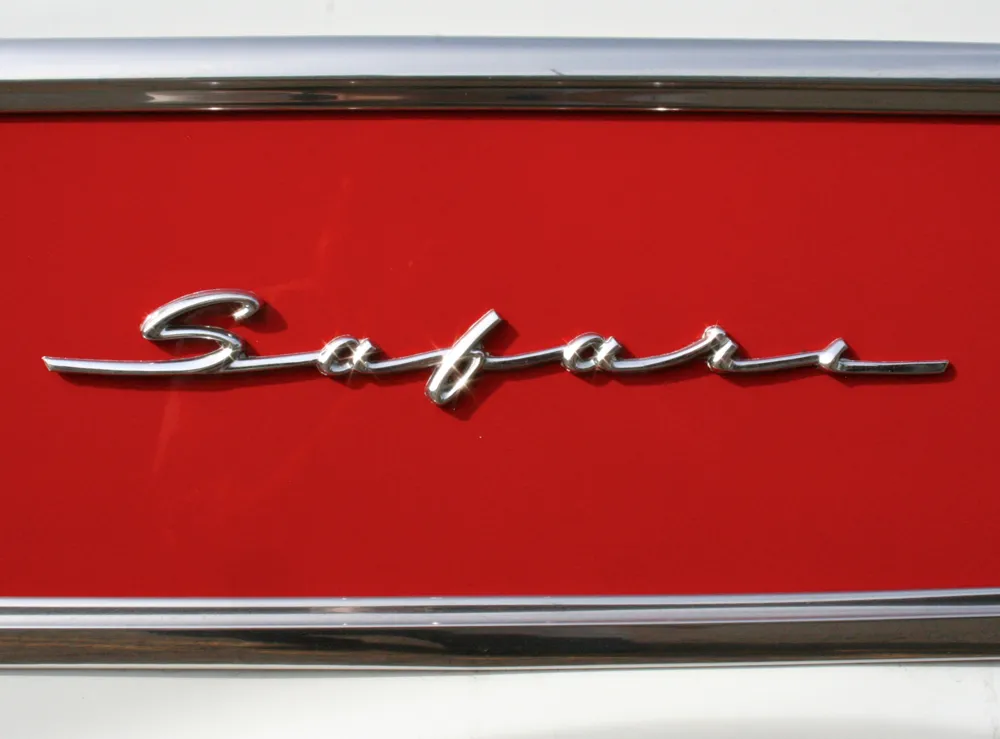
Another cool nameplate, seen on June 20, 2009, in Saint Paul, Minnesota.
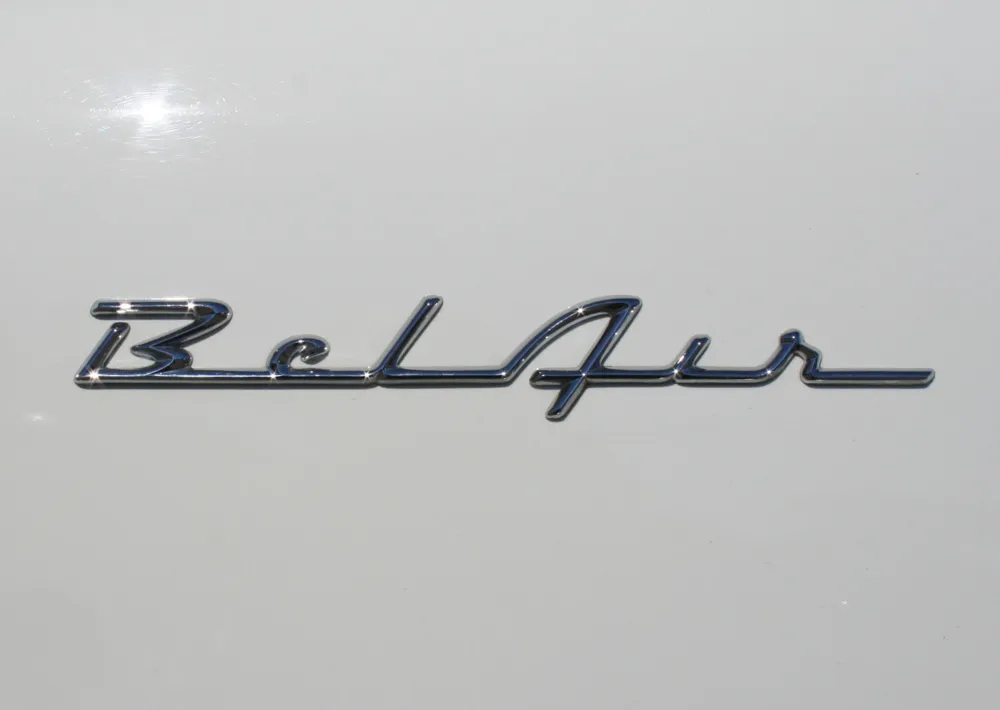
We live a few blocks from the Minnesota State Fairgrounds, and every summer the “Back to the Fifties” car show is held there. There’s usually no need to actually pay to get into it to see the cars—our neighborhood is full of them, cruising around, for the duration of the show. But lately I’ve paid to get in, mainly to get shots of the nameplates, or “brightwork” as it is known.
The Chevy “Bel Air” nameplate, from the late-fifties, is my all-time favorite. The design is so simple and stylish. (Photo taken in Saint Paul, Minnesota, June 20, 2009.)
There might be a personal bias to my “Bel Air” preference. We always had Chevys when I was a kid, a ’59 Bel Air and a ’64 Bel Air—the car I learned to drive on and the car I drove during high school in the early seventies. Here’s a cartoon painting I did of it back then as a joke:
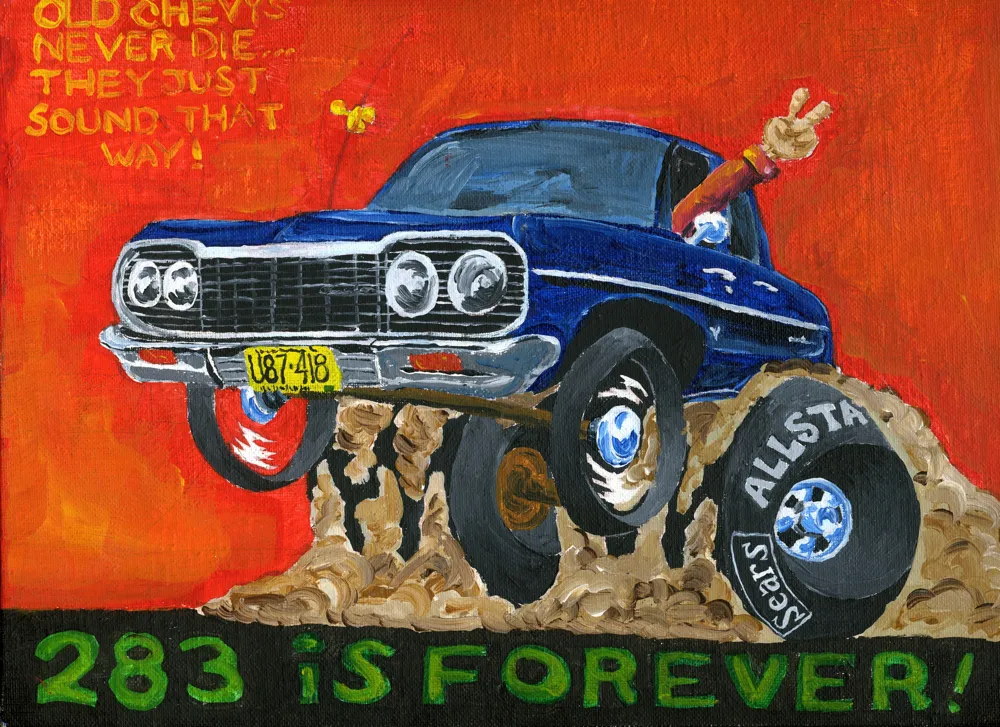
(When I was in high school, I had a little side business doing cartoon drawings of cars like this for my friends. I’ll post more of them sometime.)


